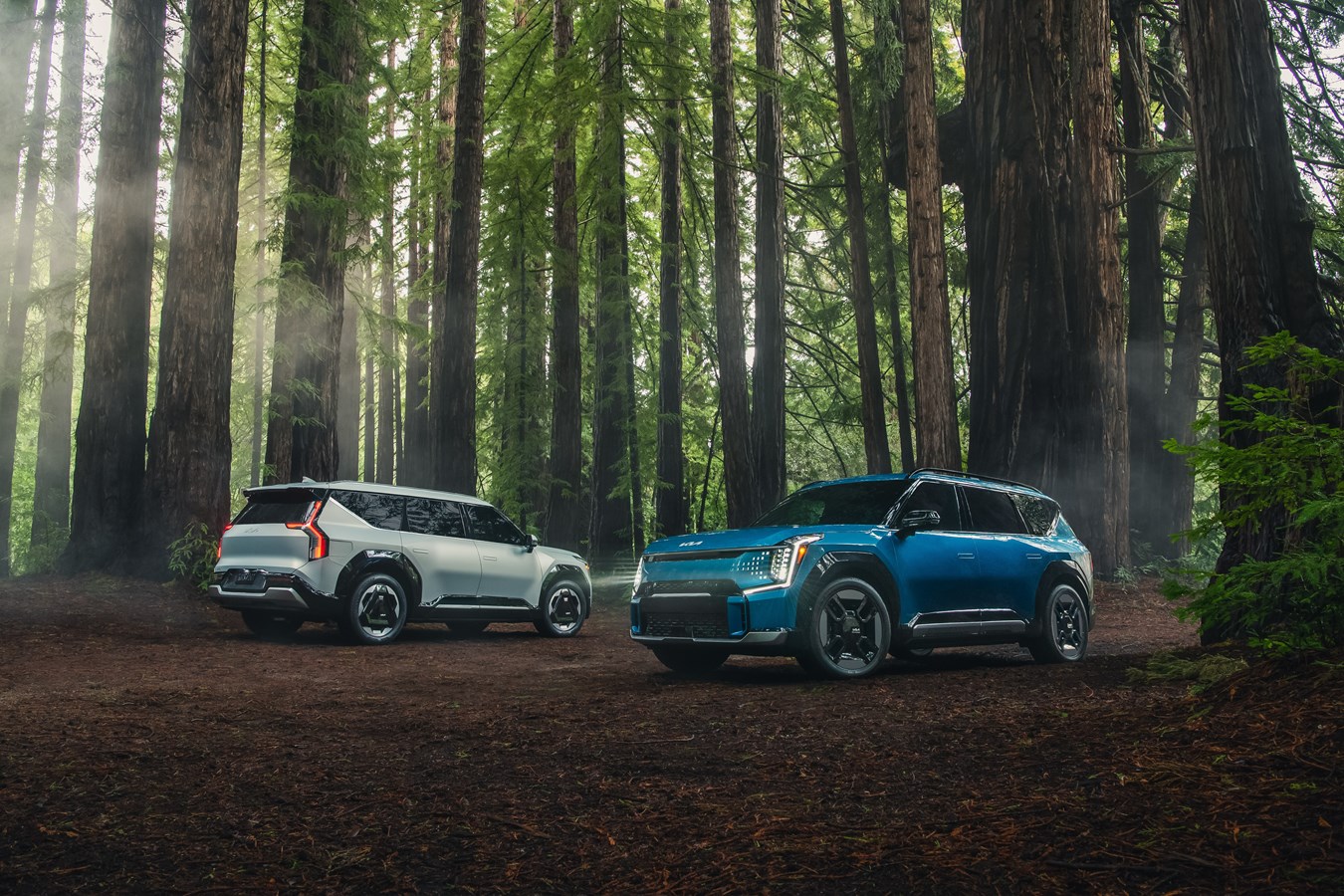
Kia EV Lineup Drives Innovation Through Technology
Kia's forward-thinking strategy towards high-voltage EV batteries, high-efficiency motors, and advanced software technologies unmistakably encapsulates the trajectory of electrified mobility. This comprehensive approach not only fosters innovation but is also meant to increase driver satisfaction. Kia's commitment to achieving a competitive driving range extends beyond mere benchmarks; it strives to surpass expectations. Kia has the goal of designing EVs that not only efficiently navigate roads, but also leave a lasting and meaningful impact on the lives of their users. With its innovative features, Kia's electric vehicles are meant to seamlessly integrate into daily lives of their drivers.
Development and Capabilities
In an interview with Steven Center, Kia North America's Chief Operating Officer, he highlighted that Kia's approach to their innovative EVs begins with the customer. By interpreting the customers' wants and unmet needs, Kia is able to develop vehicles designed to enhance driver comfort and safety, while surprising customers with useful innovations and technologies. Kia's EVs are designed with a multitude of objectives in mind, including all-electric range (AER), charging speeds, vehicle size, and cost/price considerations. Everything from the aesthetics and feel of the vehicle's design, its performance, interior space, functionality, and technological features are crafted to cater to customer needs and preferences.
This customer-centric approach is underpinned by extensive market research, where upfront efforts are dedicated to gaining a deep understanding of the target buyer and their evolving needs. The chief engineer, often referred to as the "program manager," faces the mammoth task of striking a delicate balance between these customer-centric targets and a host of other critical factors. These include cost considerations, vehicle performance, development timing, alignment with global market demands, supply chain intricacies, the nuances of assembly plant logistics, adherence to regulations, ensuring durability, maintaining impeccable quality standards, and, of course, setting the right pricing strategy. Kia's success with these challenges is defined by the ability to harmonize these multifaceted elements, delivering vehicles that not only meet, but exceed, the expectations of a world in transition.

For Kia's EVs, the size and chemistry of the high-voltage battery, the performance and efficiency of the electric motor, aerodynamics considerations, the rolling resistance (influenced by tire selection), and the vehicle mass, are additional factors that require consideration. Of these, the size and chemistry of the battery are the linchpins that carry the most weight when it comes to determining the range an EV can offer. Chief Operating Officer Steven Center emphasizes that battery size and capacity are critically important to maximizing all electric range (AER). The Program Manager's task is to comprehend the trade-offs involved in selecting the right size and chemistry that not only affect the range but also factor into considerations of durability, cost, performance in cold weather conditions, and charging speed. This approach is aimed at developing EVs that integrate into the new car market segments with the highest sales potential while enriching the lives of consumers.
The New EV9
Kia's flagship EV, the all-new EV9 SUV EV, achieves its impressive range through several key elements: battery size, motor design, a cutting-edge silicon carbide inverter, meticulous aerodynamics, and tire selection. The EV9 features an advanced NCM (nickel cobalt manganese) lithium-ion polymer high-voltage battery, available in 76.1 kWh or 99.8 kWh capacities. Its nickel, cobalt, and manganese composition enhances key performance metrics and helps with range. The "nickel-rich" NCM mix amplifies energy density. Collaborative research and development with the battery cell supplier fine-tunes the chemistry for range, durability and charging efficiency. The silicon carbide inverter, equipped with 2-Stage motor control, minimizes power loss. The motor, with square wire windings and an optimized rotor core, boosts power and efficiency. These innovations help extend the EV9's range, highlighting the significance of holistic electric vehicle design.

One feature that helps sets Kia EVs apart is their compatibility with ultra-high-speed DC charging infrastructure. This capability offers consumers the ability to recharge their EVs rapidly. DC fast charging capabilities means drivers can spend less time at the charging station, which can shorten overall trip time. The EV9 also features Kia's ultramodern Connected Car Navigation Cockpit (ccNC) system. Navigation-based charging guidance using arrival time and distance-to-empty estimates can help quell range anxiety. These innovative features help enable Kia's electric vehicles to integrate into the daily lives of consumers more seamlessly.
Energy Efficiency
Kia's engineers are constantly developing new ways to optimize the energy efficiency of their EVs. For example, recent innovations include the use of square wire EV motor windings, oil cooling, versus water cooling, and operation at high speeds ranging between 15,000 to 19,000 RPM, which can extend the motor's most efficient operating range. Additionally, when the vehicle decelerates, the motor's polarity is reversed, and it becomes a generator, capturing the car's kinetic energy, which is turned into electricity, by the motor, and sent back to the battery to be used to help extend range.
It is evident that Kia's multifaceted approach to high-voltage EV batteries, motors, and software technologies embodies the future of electric mobility. Their broad approach allows innovation and driver satisfaction to seamlessly coexist. For Kia, the pursuit of competitive range is about exceeding expectations and ensuring that EVs continue to make a meaningful impact on roads and in user lives.


